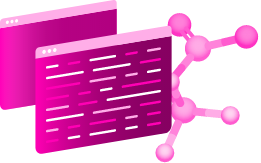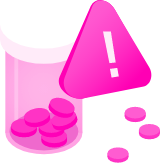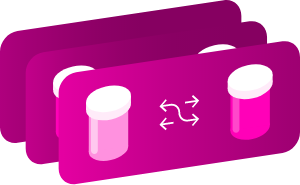Identification
- Brand Names
-
Xywav
- Generic Name
- gamma-Hydroxybutyric acid
- DrugBank Accession Number
- DB01440
- Background
-
Gamma hydroxybutyric acid, commonly abbreviated GHB, is a therapeutic drug which is illegal in multiple countries. It is currently regulated in the US and sold by Jazz Pharmaceuticals under the name Xyrem. However, it is important to note that GHB is a designated Orphan drug (in 1985). Today Xyrem is a Schedule III drug; however GHB remains a Schedule I drug and the illicit use of Xyrem falls under penalties of Schedule I. GHB is a naturally occurring substance found in the central nervous system, wine, beef, small citrus fruits and almost all other living creatures in small amounts. It is used illegally under the street names Juice, Liquid Ecstasy or simply G, either as an intoxicant, or as a date rape drug. Xyrem is a central nervous system depressant that reduces excessive daytime sleepiness and cataplexy in patients with narcolepsy.
- Type
- Small Molecule
- Groups
- Approved, Illicit, Investigational
- Structure
- Weight
-
Average: 104.1045
Monoisotopic: 104.047344122 - Chemical Formula
- C4H8O3
- Synonyms
-
- 3-carboxypropoxy acid
- 4-hydroxy-butyric acid
- 4-hydroxybutanoate
- 4-hydroxybutanoic acid
- 4-Hydroxybutyric acid
- gamma-Hydroxybutyrate
- GHB
- oxy-n-butyric acid
- Oxybate
- γ-Hydroxybutyric acid
Pharmacology
- Indication
-
Used as a general anesthetic, to treat conditions such as insomnia, clinical depression, narcolepsy, and alcoholism, and to improve athletic performance.
 Reduce drug development failure rates构建、训练和验证机器学习模型
Reduce drug development failure rates构建、训练和验证机器学习模型
with evidence-based and structured datasets.Build, train, & validate predictive machine-learning models with structured datasets. - Contraindications & Blackbox Warnings
-
 Avoid life-threatening adverse drug eventsImprove clinical decision support with information oncontraindications & blackbox warnings, population restrictions, harmful risks, & more.Avoid life-threatening adverse drug events & improve clinical decision support.
Avoid life-threatening adverse drug eventsImprove clinical decision support with information oncontraindications & blackbox warnings, population restrictions, harmful risks, & more.Avoid life-threatening adverse drug events & improve clinical decision support. - Pharmacodynamics
-
GHB predominantly works at two distinct binding sites in the central nervous system: it works as an agonist at the newly-characterized excitatory GHB receptor, while acting as a weak agonist at the inhibitory GABAB receptor. Since it is a naturally occurring substance, its physiological action is similar to that of some endogenous neurotransmitters in mammalian brain. GHB is probably synthesized from GABA in GABAergic neurons, and released when the neurons fire.
- Mechanism of action
-
迷奸是th出席更高的浓度e brain, where it activates GABA-B receptors to exert its sedative effects. With high affinity, GHB binds to excitatory GHB receptors that are densely expressed throughout the brain, including the cotex and hippocampus. There is some evidence in research that upon activation of GHB receptors in some brain areas, the excitatory neurotransmitter glutamate is released. GHB stimulates dopamin release at low concentrations by acting on the GHB receptor, and the release of dopamine occurs in a biphasic manner. At higher concentrations, GHB inhibits dopamine release by acting on the GABA-B receptors, which is followed by GHB receptor signaling and increased release of dopamine. This explains the paradoxical mix of sedative and stimulatory properties of GHB, as well as the so-called "rebound" effect, experienced by individuals using GHB as a sleeping agent, wherein they awake suddenly after several hours of GHB-induced deep sleep. It is proposed that overtime, the level of GHB in the brain decreases below the threshold for significant GABA-B receptor activation, leading to preferential activation of GHB receptor over GABA-B receptors and enhanced wakefulness.
Target Actions Organism AGamma-hydroxybutyrate (GHB) receptor agonistHumans AGamma-aminobutyric acid receptor subunit beta-1 agonistHumans - Absorption
-
Not Available
- Volume of distribution
-
- 190 to 384 mL/kg
- Protein binding
-
Not Available
- Metabolism
- Not Available
- Route of elimination
-
Animal studies indicate that metabolism is the major elimination pathway for sodium oxybate, producing carbon dioxide and water via the tricarboxylic acid (Krebs) cycle and secondarily by beta-oxidation. Succinic acid enters the Krebs cycle where it is metabolized to carbon dioxide and water. Fecal and renal excretion is negligible. 5% renal elimination.
- Half-life
-
30 to 60 minutes
- Clearance
-
- apparent oral cl=9.1 mL/min/kg [healthy adults receiving a single oral dose of 25 mg/kg]
- 4.5 mL/min/kg [cirrhotic patients without ascites receiving a single oral dose of 25 mg/kg]
- 4.1 mL/min/kg [cirrhotic patients with ascites receiving a single oral dose of 25 mg/kg]
- Adverse Effects
-
 Improve decision support & research outcomesWith structured adverse effects data, including:blackbox warnings, adverse reactions, warning & precautions, & incidence rates.Improve decision support & research outcomes with our structured adverse effects data.
Improve decision support & research outcomesWith structured adverse effects data, including:blackbox warnings, adverse reactions, warning & precautions, & incidence rates.Improve decision support & research outcomes with our structured adverse effects data. - Toxicity
-
High doses of GHB may lead to nausea, dizziness, drowsiness, agitation, visual disturbances, depressed breathing, amnesia, unconsciousness, and death in some cases.
- Pathways
- Not Available
- Pharmacogenomic Effects/ADRsBrowse all" title="" id="snp-actions-info" class="drug-info-popup" href="javascript:void(0);">
- Not Available
Interactions
- Drug InteractionsLearn More" title="" id="structured-interactions-info" class="drug-info-popup" href="javascript:void(0);">
-
This information should not be interpreted without the help of a healthcare provider. If you believe you are experiencing an interaction, contact a healthcare provider immediately. The absence of an interaction does not necessarily mean no interactions exist.
Drug Interaction Integrate drug-drug
interactions in your software1,2-Benzodiazepine The risk or severity of adverse effects can be increased when gamma-Hydroxybutyric acid is combined with 1,2-Benzodiazepine. Acetazolamide The risk or severity of adverse effects can be increased when Acetazolamide is combined with gamma-Hydroxybutyric acid. Acetophenazine The risk or severity of adverse effects can be increased when Acetophenazine is combined with gamma-Hydroxybutyric acid. Agomelatine The risk or severity of adverse effects can be increased when gamma-Hydroxybutyric acid is combined with Agomelatine. Alfentanil The risk or severity of adverse effects can be increased when Alfentanil is combined with gamma-Hydroxybutyric acid. Alimemazine The risk or severity of adverse effects can be increased when Alimemazine is combined with gamma-Hydroxybutyric acid. Almotriptan The risk or severity of adverse effects can be increased when Almotriptan is combined with gamma-Hydroxybutyric acid. Alosetron The risk or severity of adverse effects can be increased when Alosetron is combined with gamma-Hydroxybutyric acid. Alprazolam The risk or severity of adverse effects can be increased when Alprazolam is combined with gamma-Hydroxybutyric acid. Alverine The risk or severity of adverse effects can be increased when gamma-Hydroxybutyric acid is combined with Alverine.  Identify potential medication risksEasily compare up to 40 drugs with our drug interaction checker.Get severity rating, description, and management advice.Learn more
Identify potential medication risksEasily compare up to 40 drugs with our drug interaction checker.Get severity rating, description, and management advice.Learn more - Food Interactions
- Not Available
Products
-
 Drug product information from 10+ global regionsOur datasets provide approved product information including:
Drug product information from 10+ global regionsOur datasets provide approved product information including:
dosage, form, labeller, route of administration, and marketing period.Access drug product information from over 10 global regions. - Product Ingredients
-
Ingredient UNII CAS InChI Key Calcium oxybate 8W24SYD6ZI 82316-97-0 AZRRVLSHRWGNRS-UHFFFAOYSA-L Magnesium oxybate G983HLV265 82316-98-1 QWZIZKOBUUSCLO-UHFFFAOYSA-L Potassium oxybate S8NKF3H3KT 57769-01-4 TXSIWDVUJVMMKM-UHFFFAOYSA-M - Mixture Products
-
Name Ingredients Dosage Route Labeller Marketing Start Marketing End Region Image Xywav Calcium oxybate(0.5 g/1mL)+Potassium oxybate(0.5 g/1mL)+Magnesium oxybate(0.5 g/1mL)+Sodium oxybate(0.5 g/1mL) Solution Oral Jazz Pharmaceuticals, Inc. 2020-11-02 Not applicable US Xywav Calcium oxybate(0.5 g/1mL)+Potassium oxybate(0.5 g/1mL)+Magnesium oxybate(0.5 g/1mL)+Sodium oxybate(0.5 g/1mL) Solution Oral Jazz Pharmaceuticals, Inc. 2020-11-02 Not applicable US Xywav Calcium oxybate(0.5 g/1mL)+Potassium oxybate(0.5 g/1mL)+Magnesium oxybate(0.5 g/1mL)+Sodium oxybate(0.5 g/1mL) Solution Oral Jazz Pharmaceuticals, Inc. 2020-11-02 Not applicable US
Categories
- Drug Categories
-
- Acids, Acyclic
- Adjuvants, Anesthesia
- 麻醉剂
- 麻醉剂, General
- 麻醉剂, Intravenous
- Butyrates
- Central Nervous System Agents
- Central Nervous System Depressants
- Central Nervous System Depression
- Decreased Central Nervous System Organized Electrical Activity
- Fatty Acids
- Fatty Acids, Volatile
- Hydroxy Acids
- Hydroxybutyrates
- Lipids
- Classification
- Not classified
- Affected organisms
-
- Humans and other mammals
Chemical Identifiers
- UNII
- 30IW36W5B2
- CAS number
- 591-81-1
- InChI Key
- SJZRECIVHVDYJC-UHFFFAOYSA-N
- InChI
-
InChI=1S/C4H8O3/c5-3-1-2-4(6)7/h5H,1-3H2,(H,6,7)
- IUPAC Name
-
4-hydroxybutanoic acid
- SMILES
-
OCCCC(O)=O
References
- Synthesis Reference
-
Joseph Klosa, "Production of nonhygroscopic salts of 4-hydroxybutyric acid." U.S. Patent US4393236, issued March, 1963.
US4393236 - 一般引用
- Not Available
- External Links
-
- Human Metabolome Database
- HMDB0000710
- KEGG Compound
- C00989
- PubChem Compound
- 3037032
- PubChem Substance
- 46507548
- ChemSpider
- 9984
- BindingDB
- 50023575
- 2387302
- ChEBI
- 30830
- ChEMBL
- CHEMBL1342
- ZINC
- ZINC000001532805
- Therapeutic Targets Database
- DAP001522
- PharmGKB
- PA10819
- Wikipedia
- Gamma-Hydroxybutyric_acid
Clinical Trials
- Clinical TrialsLearn More" title="" id="clinical-trials-info" class="drug-info-popup" href="javascript:void(0);">
-
Phase Status Purpose Conditions Count 4 Completed Basic Science Healthy Controls/Narcolepsy With Cataplexy 1 4 Completed Treatment Narcolepsy, Excessive Daytime Sleepiness 1 4 Recruiting Supportive Care Palliative Treatment 1 2 Completed Treatment Major Depressive Disorder (MDD) 1 1 Completed Other Human Immunodeficiency Virus (HIV) Infections/Pharmacokinetic Interactions 1 Not Available Completed Not Available Narcolepsy, Excessive Daytime Sleepiness 1 Not Available Completed Other Autism Disorder/Bipolar Disorder (BD)/Major Depressive Disorder (MDD) 1 Not Available Completed Prevention Inflammatory Responses/Intrusive thoughts/Stress, Physiological/Trauma, Psychological 1 Not Available Recruiting Not Available Narcolepsy, Excessive Daytime Sleepiness/Pregnancy Related 1
Pharmacoeconomics
- Manufacturers
-
Not Available
- Packagers
-
- DSM Corp.
- Jazz Pharmaceuticals
- Orphan Medical Inc.
- Patheon Inc.
- Valeant Ltd.
- Dosage Forms
-
Form Route Strength Solution Oral - Prices
-
Unit description Cost Unit Xyrem 500 mg/ml oral solution 5.33USD ml DrugBank does not sell nor buy drugs. Pricing information is supplied for informational purposes only. - Patents
-
Patent Number Pediatric Extension Approved Expires (estimated) Region US7765106 Yes 2010-07-27 2024-12-16 US US6780889 Yes 2004-08-24 2021-01-04 US CA2355293 No 2005-08-16 2019-12-22 Canada US8731963 Yes 2014-05-20 2023-06-17 US US8772306 Yes 2014-07-08 2033-09-15 US US9050302 Yes 2015-06-09 2033-09-15 US US9486426 Yes 2016-11-08 2033-09-15 US US10213400 Yes 2019-02-26 2033-09-15 US US10675258 No 2020-06-09 2033-01-11 US US8901173 No 2014-12-02 2033-01-11 US US10195168 No 2019-02-05 2033-01-11 US US8591922 No 2013-11-26 2033-01-11 US US9132107 No 2015-09-15 2033-01-11 US US10864181 Yes 2020-12-15 2033-09-15 US US11253494 Yes 2013-09-15 2033-09-15 US US11426373 No 2017-09-19 2037-09-19 US US11554102 No 2013-01-11 2033-01-11 US
Properties
- State
- Solid
- Experimental Properties
- Not Available
- Predicted Properties
-
Property Value Source Water Solubility 494.0 mg/mL ALOGPS logP -0.63 ALOGPS logP -0.51 Chemaxon logS 0.68 ALOGPS pKa (Strongest Acidic) 4.44 Chemaxon pKa (Strongest Basic) -2.4 Chemaxon Physiological Charge -1 Chemaxon Hydrogen Acceptor Count 3 Chemaxon 氢供体数 2 Chemaxon Polar Surface Area 57.53 Å2 Chemaxon Rotatable Bond Count 3 Chemaxon Refractivity 23.8 m3·mol-1 Chemaxon Polarizability 10.17 Å3 Chemaxon Number of Rings 0 Chemaxon Bioavailability 1 Chemaxon Rule of Five Yes Chemaxon Ghose Filter No Chemaxon Veber's Rule No Chemaxon MDDR-like Rule No Chemaxon - Predicted ADMET Features
-
Property Value Probability Human Intestinal Absorption + 0.7851 Blood Brain Barrier + 0.9171 Caco-2 permeable + 0.5539 P-glycoprotein substrate Non-substrate 0.8415 P-glycoprotein inhibitor I Non-inhibitor 0.981 P-glycoprotein inhibitor II Non-inhibitor 0.9783 Renal organic cation transporter Non-inhibitor 0.9223 CYP450 2C9 substrate Non-substrate 0.8341 CYP450 2D6 substrate Non-substrate 0.9043 CYP450 3A4 substrate Non-substrate 0.7878 CYP450 1A2 substrate Non-inhibitor 0.8141 CYP450 2C9 inhibitor Non-inhibitor 0.9518 CYP450 2D6 inhibitor Non-inhibitor 0.9541 CYP450 2C19 inhibitor Non-inhibitor 0.9642 CYP450 3A4 inhibitor Non-inhibitor 0.9721 CYP450 inhibitory promiscuity Low CYP Inhibitory Promiscuity 0.9884 Ames test Non AMES toxic 0.9331 Carcinogenicity Non-carcinogens 0.7478 Biodegradation Ready biodegradable 0.9967 Rat acute toxicity 1.7448 LD50, mol/kg Not applicable hERG inhibition (predictor I) Weak inhibitor 0.9579 hERG inhibition (predictor II) Non-inhibitor 0.97
Spectra
- Mass Spec (NIST)
- Download (8.17 KB)
- Spectra
Targets

insights and accelerate drug research.
- Kind
- Protein
- Organism
- Humans
- Pharmacological action
-
Yes
- Actions
-
Agonist
- General Function
- Virus receptor activity
- Specific Function
- Riboflavin transporter. Riboflavin transport is Na(+)-independent but moderately pH-sensitive. Activity is strongly inhibited by riboflavin analogs, such as lumiflavin. Weakly inhibited by flavin a...
- Gene Name
- SLC52A2
- Uniprot ID
- Q9HAB3
- Uniprot Name
- Solute carrier family 52, riboflavin transporter, member 2
- 分子量
- 45776.61 Da
References
- Castelli MP,并以此i I, Pistis M, Peis M, Berta D, Gelain A, Gessa GL, Cignarella G: Stereoselectivity of NCS-382 binding to gamma-hydroxybutyrate receptor in the rat brain. Eur J Pharmacol. 2002 Jun 20;446(1-3):1-5. [Article]
- Castelli MP, Ferraro L, Mocci I, Carta F, Carai MA, Antonelli T, Tanganelli S, Cignarella G, Gessa GL: Selective gamma-hydroxybutyric acid receptor ligands increase extracellular glutamate in the hippocampus, but fail to activate G protein and to produce the sedative/hypnotic effect of gamma-hydroxybutyric acid. J Neurochem. 2003 Nov;87(3):722-32. [Article]
- Kind
- Protein
- Organism
- Humans
- Pharmacological action
-
Yes
- Actions
-
Agonist
- General Function
- Ligand-gated ion channel activity
- Specific Function
- Component of the heteropentameric receptor for GABA, the major inhibitory neurotransmitter in the vertebrate brain. Functions also as histamine receptor and mediates cellular responses to histamine...
- Gene Name
- GABRB1
- Uniprot ID
- P18505
- Uniprot Name
- Gamma-aminobutyric acid receptor subunit beta-1
- 分子量
- 54234.085 Da
References
- Maitre M, Humbert JP, Kemmel V, Aunis D, Andriamampandry C: [A mechanism for gamma-hydroxybutyrate (GHB) as a drug and a substance of abuse]. Med Sci (Paris). 2005 Mar;21(3):284-9. [Article]
Transporters
- Kind
- Protein
- Organism
- Humans
- Pharmacological action
-
Unknown
- Actions
-
Inhibitor
- General Function
- Symporter activity
- Specific Function
- Proton-coupled monocarboxylate transporter. Catalyzes the rapid transport across the plasma membrane of many monocarboxylates such as lactate, pyruvate, branched-chain oxo acids derived from leucin...
- Gene Name
- SLC16A7
- Uniprot ID
- O60669
- Uniprot Name
- Monocarboxylate transporter 2
- 分子量
- 52199.745 Da
References
- Lin RY, Vera JC, Chaganti RS, Golde DW: Human monocarboxylate transporter 2 (MCT2) is a high affinity pyruvate transporter. J Biol Chem. 1998 Oct 30;273(44):28959-65. [Article]
- Kind
- Protein
- Organism
- Humans
- Pharmacological action
-
Unknown
- Actions
-
Inhibitor
- General Function
- Symporter activity
- Specific Function
- Proton-coupled monocarboxylate transporter. Catalyzes the rapid transport across the plasma membrane of many monocarboxylates such as lactate, pyruvate, branched-chain oxo acids derived from leucin...
- Gene Name
- SLC16A1
- Uniprot ID
- P53985
- Uniprot Name
- Monocarboxylate transporter 1
- 分子量
- 53943.685 Da
References
- Lin RY, Vera JC, Chaganti RS, Golde DW: Human monocarboxylate transporter 2 (MCT2) is a high affinity pyruvate transporter. J Biol Chem. 1998 Oct 30;273(44):28959-65. [Article]
- Kind
- Protein
- Organism
- Humans
- Pharmacological action
-
Unknown
- Actions
-
Substrate
- General Function
- Symporter activity
- Specific Function
- Proton-linked monocarboxylate transporter. Catalyzes the rapid transport across the plasma membrane of many monocarboxylates such as lactate, pyruvate, branched-chain oxo acids derived from leucine...
- Gene Name
- SLC16A3
- Uniprot ID
- O15427
- Uniprot Name
- Monocarboxylate transporter 4
- 分子量
- 49468.9 Da
References
- Manning Fox JE, Meredith D, Halestrap AP: Characterisation of human monocarboxylate transporter 4 substantiates its role in lactic acid efflux from skeletal muscle. J Physiol. 2000 Dec 1;529 Pt 2:285-93. [Article]
Drug created at July 31, 2007 13:09 / Updated at October 19, 2020 08:19




